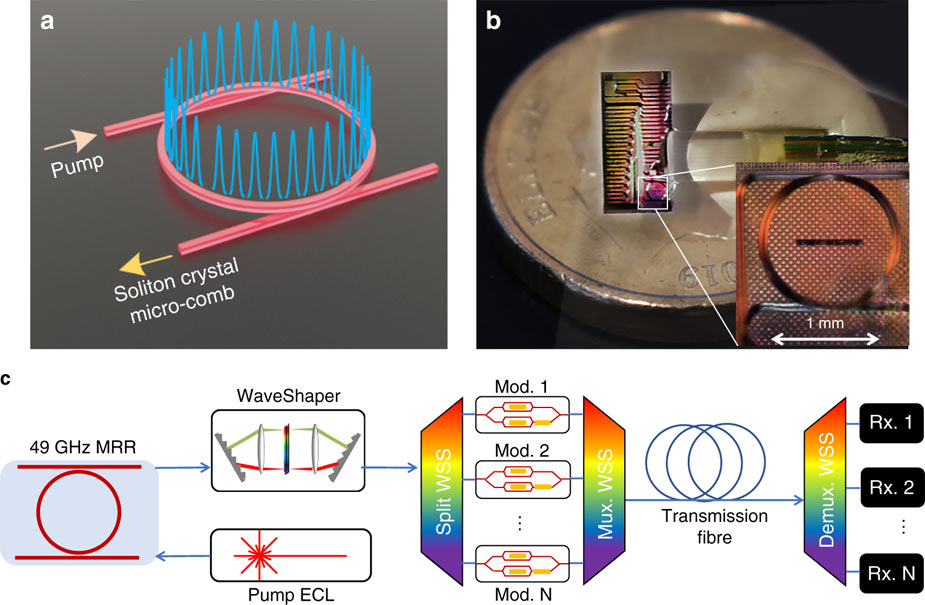Researchers from Australia’s Monash, Swinburne, and RMIT universities said that they have successfully developed a 44.2Tbps internet speed, which is far beyond the fastest internet speed in the world at this time.
According to their research paper published in the open-access journal Nature Communications, that speed is theoretically enough to download the contents of more than 50 pieces of 100GB Ultra HD Blu-ray discs in one second.
To put it in another perspective, 44.2Tbps is around 1 million times faster than the average internet speed in the U.S., which clocks at around 50Mbps.
The achievement was made using ordinary optical fiber cable in a length of 75km of standard optical fiber using a single integrated chip source, connecting RMIT’s Melbourne City campus and Monash University’s Clayton campus.
The findings represent a “world-record for bandwidth,” according to Swinburne University Professor David Moss, one of the team members responsible.
That speed has been made possible using a technology called 'microcomb', which uses "soliton crystal micro-combs" that are "optical frequency combs generated by integrated micro-cavity resonators."

“What our research demonstrates is the ability for fibers that we already have in the ground, thanks to the NBN project, to be the backbone of communications networks now and in the future. We’ve developed something that is scalable to meet future needs,” said co-lead author of the research and Monash University lecturer Bill Corcoran.
Microcomb offers a more efficient and compact way to transmit data, as it is capable of generating very sharp and equidistant frequency lines in a tiny microphotonic chip.
This technology has been around for years. But has only matured recently that companies have started using it to enable new applications, including LiDAR, timekeeping and optical communications.
In the research, the researchers used microcomb to replace the standard bunch of about 80 lasers found in modern telecommunication equipment.
This piece of technology was placed within the cable’s optical fiber in what the researchers say is the first time the technology has been used in this kind of field trial.
Microcomb is compatible with existing fiber optic lines. But the challenge is to turn the technology into something that can be used with existing infrastructure, without having to overhaul the internet's pipelines.
“Long-term, we hope to create integrated photonic chips that could enable this sort of data rate to be achieved across existing optical fiber links with minimal cost,” said RMIT’s Professor Arnan Mitchell.
Modern internet connections run through networks of cables.
With them, users can browse the web, stream videos, engage in social media networks, play online games, download things and many many more. Companies can use reliable internet connection to keep their businesses running.
But as internet content becomes more complex and plenty, the world needs increasingly faster internet speeds.
Gigabits internet speed has been around for quite a while, but at this time, it's still uncommon to find them in residential homes. This is why the researchers said that if the technology ends up becoming commercialized, it’s likely to first be used to connect data centers.
However, if the technology becomes cheap enough, the researchers hope that it could one day be used by the general public.
That speed could also be used by those that adopt emerging trends, like the Internet of Things (IoT) and cloud computing.
"Our findings do not represent the first demonstration of a microcomb in fiber communications, but it is the first time that the microcomb has achieved a performance compatible with the strong demands of future communication systems," said Peter Andrekson, who is also one of the co-authors of the paper.